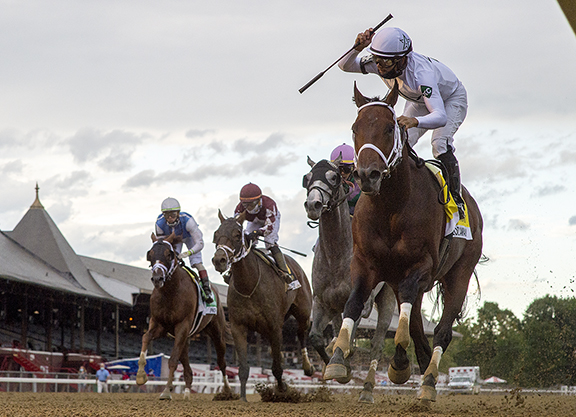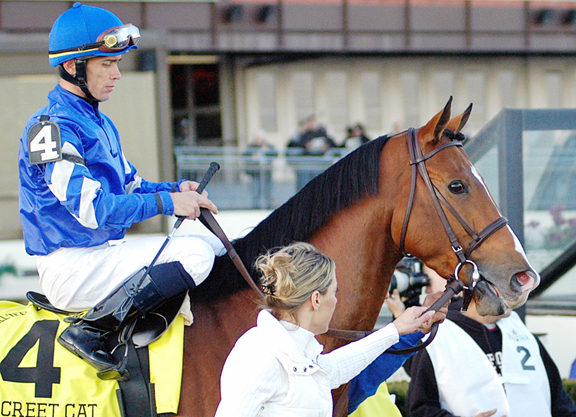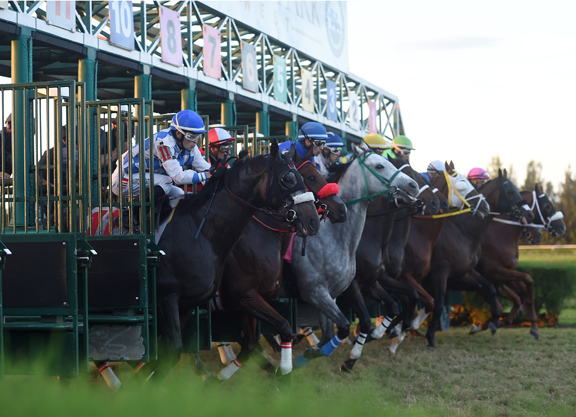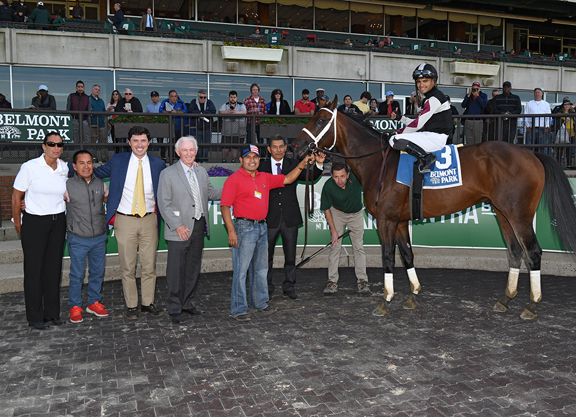When Gulfstream Park West, still known to most as Calder Race Course, closed its gates earlier this month, it was the end of an era. After five decades of the familiar cycle of horses, people, and equipment moving in and out of barns, the last van has carried the last hoof off the property and the tack rooms have been emptied for the final time.
But that doesn't mean that all signs of life were gone from the property.
Madeleine Sciametta and Allison Hickey, lifelong racetrackers who had called Calder home for years, began asking around as the track approached its end – what about the barn cats?
Like most racetracks, Calder was crawling with cats, from pets who arrived with the horses and were tucked into tack rooms at night to completely feral creatures who would come out to be fed and vanish again. Sciametta and Hickey each brought food to separate colonies of cats on different ends of the property and say there were at least four feeding stations, each with its own group of cats. Sciametta said a number of stables would arrive with cats and then leave them behind when they packed up and went to the next track. Then there were people who, knowing feral cats were fed at the track, would dump their household pets still wearing their collars off at the gate, assuming someone else would care for them.
Horses and people were supposed to be off the grounds by April 5. As the date approached, it became clear to Sciametta and Hickey that while lots of people said they wanted to help, no one else was stepping up. On April 15, The Stronach Group's lease of the property will expire and it will be transferred back to Churchill Downs. Most horsemen expect the remaining buildings (the grandstand was leveled in 2015) will be razed once CDI takes possession of the track again.

Buddy, who is known as the “ambassador of Calder” used to monitor morning training alongside the paramedics and sit in a chair in the walking ring during afternoon racing. Randy Halvorsrod photo
“I was looking at all the cats there and knew nobody was going to do anything about it,” said Hickey. “I think a lot of people on the track wanted to help, but they didn't know what to do, or they were busy working. I think Madeleine and I, we see something that needs to be done and we just find a way to do it.”
Sciametta and Hickey waited to begin collecting cats until near the move-out date, not wanting to inadvertently scoop up someone's pet. When it became clear the deadline was approaching, they began setting traps, still not sure what to do with the animals they caught.
“I used to say, I don't want any barn cats, they're always underfoot,” Sciametta said. “But since I started feeding them, you start to get attached to them. Especially the ones in my colony, they were like someone's pet … when it came time to close, I couldn't just put my stuff in my car and drive out the stable gate and leave those cats sitting there, waiting for me to come feed them the next day and not be there.”
The pair began gathering up the cats they could and posting to social media looking for help. Hickey said that at most of the tracks where she and her husband, trainer Bill Hickey, have stabled, there are people who take it upon themselves to feed and fix the resident cat population. Sometimes they're part of a coordinated effort, as is true at Saratoga, and sometimes it's just racetrackers taking cats to the nearest veterinary clinic and paying for a spay/neuter surgery. Miami-Dade County Animal Services had also trapped and spayed or neutered cats, releasing them back on the track through the years. So, while most of the cats had been fixed, a number had other medical needs like dental work or infectious disease testing that would need to be done. Additionally, most of them – Sciametta estimated 70 percent – were feral or semi-feral. She found takers for the friendly cats quickly, but those that couldn't be lap cats were more challenging to place.
Through the power of the Facebook algorithms, Sciametta's call for help reached Randy Halvorsrod, who owns Halvorsrod Farm in Wellington, Fla., and happens to foster cats for Bella's Promise Pet Rescue in Boca Raton, Fla. Bella's Promise is based completely on foster care homes and works with local county animal control centers to source animals to homes. Halvorsrod said that perhaps surprisingly, while there is an overpopulation of stray dogs and cats in South Florida, there is an underpopulation of needy pets in the Northeast, specifically in New Hampshire and Massachusetts. Nearly all the animals saved by Bella's Promise are transported north for successful adoptions.
“I knew the scale [of the problem]; I didn't know I could save this many cats with her,” said Halvorsrod. “Rescues usually prefer kittens and pretty cats. That's how it is because everyone wants a kitten. I called the head of Bella's Promise and she said, 'Take them. We'll figure it all out.' The scale is huge but I think at most racetracks you have a huge amount of cats.”

Patty, an older cat, lived in the same tack room for a decade as trainers came and went. Randy Halvorsrod photo
To date, the network of advocates for the Calder cats have trapped and placed more than 50 cats in barn homes, adoptive homes, or foster care. As of this week, Hickey estimated there were only 10 or so left on the Calder property. Sciametta's posts also reached Desiree Barbazon, an Ocala-based realtor who specializes in selling horse farms. Thanks to Barbazon, Sciametta says a large number of the trapped cats went to barn placements in Ocala and Wellington.
“I just put it out there, like hey guys these cats need help,” said Barbazon. “It went viral. I kind of guilted everybody into it – can't you open your heart to one cat? I had people on my Facebook saying, 'I used to gallop horses at Calder, I'll take one.'”
At one point, the demand was so great that Sciametta and Hickey coordinated a ride for 18 cats to the Central Florida area in a specially-outfitted air-conditioned van hired by The Stronach Group to take the kitties to new assignments in barns in Barbazon's area.
For the women who came together to help the cats, it's a fitting way to say goodbye to a property that featured prominently in their racing journeys.
“Everybody talks about the horse community doesn't come together and stand by each other, but in this venture it really worked out,” said Sciametta.
“I walked hots at Hialeah as a kid; Calder was more of a factory type,” said Halvorsrod, who also ran the shed for The Oaks Thoroughbreds at Calder and worked the auctions that were held there through the years. “It was a good, working track. It's sad, the whole thing. I was born and raised in Miami. The track's 50 years old and I'm 66. It's been there the whole time.”
The buildings may soon be gone, but the dozens of adopters will keep their own little piece of life at Calder with them a bit longer.
As the rehoming effort draws to a close, Sciametta and Hickey say the best way the public can help is by donating to Bella's Promise, which took on the significant cost of vetting dozens of cats to prepare them for rehoming. For more information or to donate, visit its Facebook page here.
The post Florida Horsewomen Come Together To Save Calder’s Resident Barn Cats appeared first on Horse Racing News | Paulick Report.




